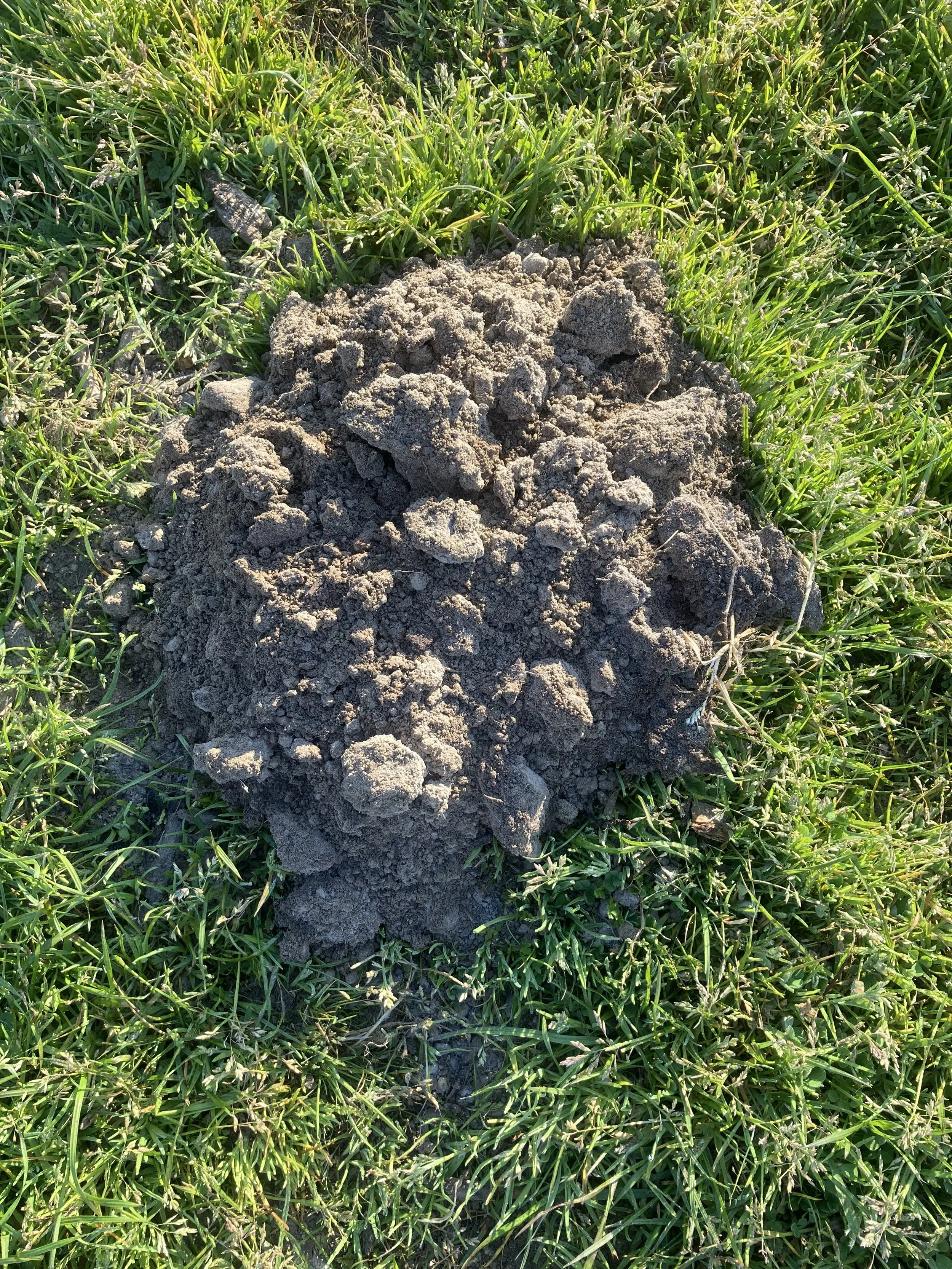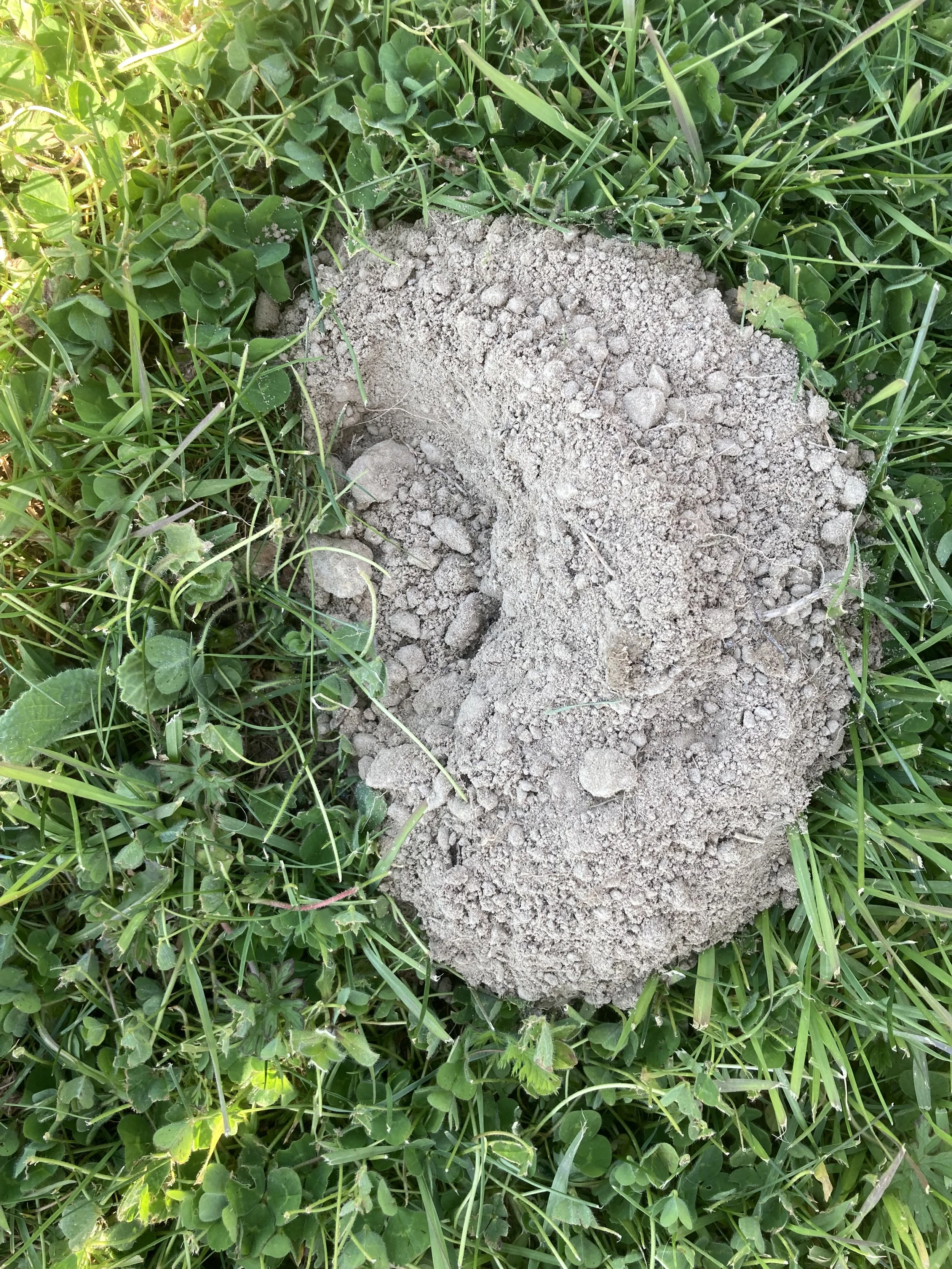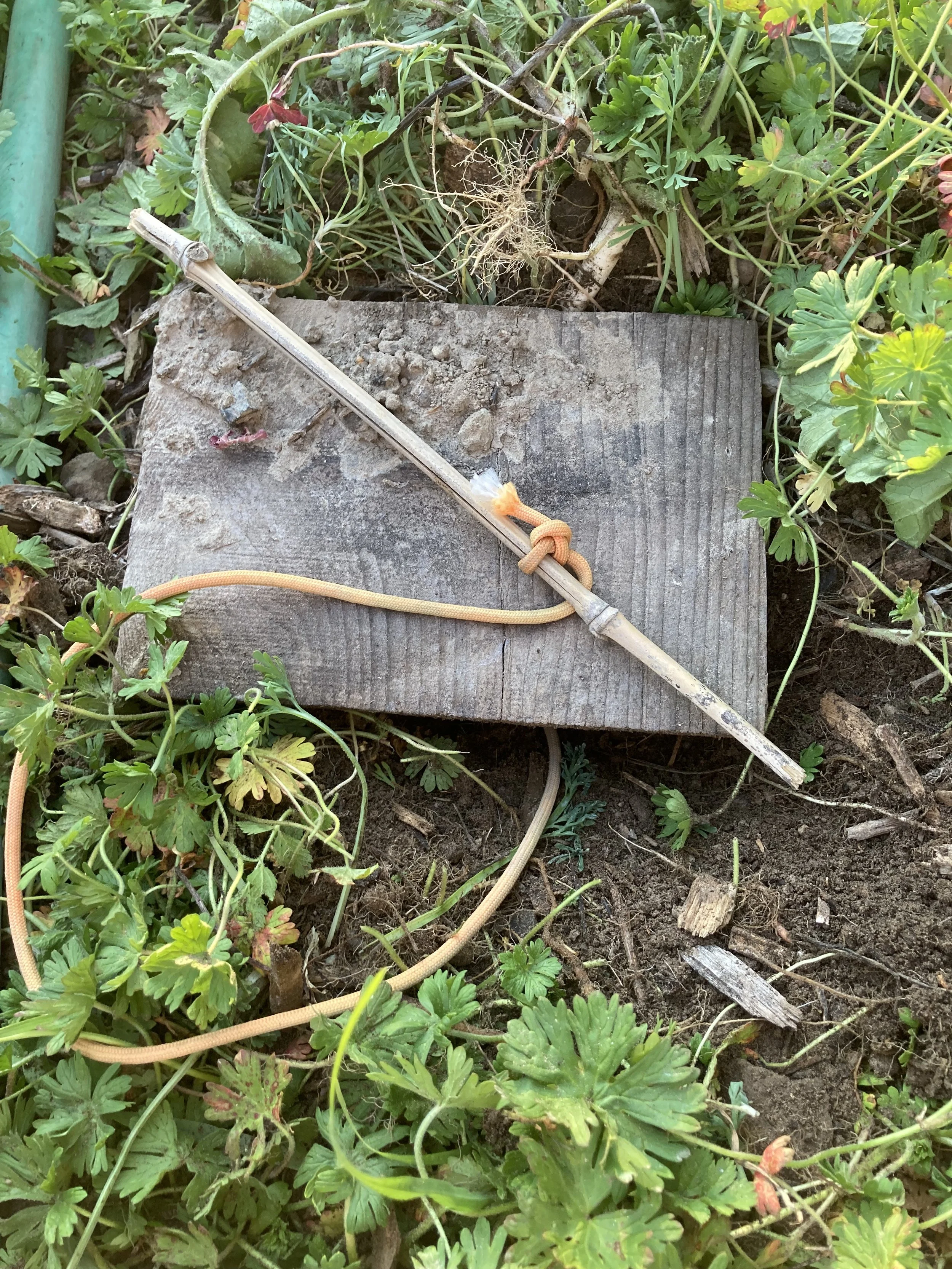Are Gophers, Moles, or Voles Driving You Mad?
ORIGINALLY FROM AUGUST 2020, UPDATED JUNE 2025
Gophers are making me crazy! I took a hiatus from my garden and returned only to find that a few new gophers had moved in. Even after I eliminate them, it doesn’t take long before one, two, three return. They are tenacious! My battle with them is back on. Are you battling gophers, moles, or voles too?
If you live in the Bay Area of California, it’s not an “if,” it’s a “when.” I have some excellent advice for you. While I always advocate for prevention, drastic destruction calls for drastic measures. Let’s learn more about our volatile friends so you know how best to prepare for and get rid of gophers, moles, or voles in your garden.
*This blog mentions eliminating gophers and voles. This is a last resort, only as a way to reduce populations. I always recommend the most humane means possible.
Voles, Moles, and Gophers in Your Garden
The mating season for gophers (AKA pocket gophers) starts in March. This is when they search for love, perhaps winding up in your backyard.
Once they have successfully secured their mate, the female can have up to 5 litters of 2-8 pups throughout the spring and summer months. Plus, depending on where you live and if the winter is mild, they can be active year-round. That's a lot of gophers in your garden!
But gophers aren’t the only animals that wreak havoc on your lawn. Moles and voles can also find their way in and cause a lot of problems like:
Disrupting the soil
Damaging roots and plants
Damaging the irrigation
Creating mounds and holes that mess up your lawn’s aesthetic
Proper Identification of Varmints
These problems can be frustrating for anyone, especially a beginner gardener. And if you don’t know what you’re dealing with, it’s hard to solve the problem. Here’s how to tell these varmints apart.
Voles
Voles create a very clean tunneling system about 1-1 ½ inches in diameter. The holes may be larger or smaller, but they are distinctively clean. You will often see multiple holes in the same area that lead to their burrowing system. They’re very active and create surface runways. Since they’re prey, they like to stay hidden.
V for vegetarian! Voles eat grasses, tubers, vegetable roots, the bark of trees, etc. They’re not great at climbing, so they’re eating plant material at (their) eye level.
Moles
Have you heard the phrase, “Don’t make a mountain out of a molehill?”
When moles make your yard their home, you typically see a dirt pile or a mole mound. They appear circular and look like a volcano of dirt. Moles make shallow tunnels, only about a few inches below the surface, that connect via bylines between the mounds. Because of their shallow tunneling, they can do substantial damage to walkways and your lawn.
M is for meat! Moles eat insects like earthworms, beetles, soil-dwelling larvae, etc.). I consider them beneficial since they eat garden pests – up to 100x their body weight! They provide a great service, despite the mayhem they cause to your garden’s aesthetic.
Gophers
If you see a garden plant that has mysteriously vanished, or have a line of trees or a hedge row with just one dead plant, it’s likely a gopher. They can also chew on irrigation systems like sprinklers, so be sure to check on that regularly.
Gopher holes aren’t always so obvious above ground. You might notice a crescent-shaped mound with an indentation or plug. However, they have extensive burrowing systems and deep tunnels.
Gophers are solitary dwellers. The bull lives in his burrow, which is surrounded by complex burrowing systems inhabited by his female gophers. Each female has her own burrow. Once they mate, she stays fairly inactive until the pups are about 6 weeks of age. This is when they are pushed from their mom's den to find a burrow of their own.
This is typically the only time you might see a gopher above ground. Once they are in their new home, they get to work eating whatever plant roots and vegetables they can find. I have literally watched a full-sized artichoke plant get pulled into a burrow by a gopher. Like I said before… they are tenacious!
If you don’t want that happening in your garden, here are a few tips for managing these critters.
4 Ways to Get Rid of Voles, Moles, and Gophers Naturally
You might have considered or tried gassers and baits to get rid of the voles, moles, or gophers in your yard. There are two problems with this: 1) gophers close off tunnels quickly only to return later when it’s safe, and 2) baits can be hazardous to wildlife. There are better ways to manage these critters naturally, starting with prevention.
1. Prevention
Basic vole, mole, and gopher prevention includes:
Mowing grassy areas
Securing compost stations
Removing vegetative cover, piles of brush, or debris
Keeping your yard clear makes detecting voles and other varmints easier. It can also reduce the destruction they cause because they don’t like to feed in the open.
2. Exclusion
Credit: Green Bean Connection, 2010.
If prevention fails, your next step is to use what IPM calls mechanical controls. This includes adding barriers or netting to exclude pests from your garden.
If you leave with just one takeaway, it should be to always, I mean always, put your plants into gopher baskets. If you have raised beds, line your raised beds with gopher wire or 1/2" hardware cloth. The extra cost of gopher baskets and gopher cloth will save you money and frustration in the long run.
One thing to note is that gopher wire is different from poultry wire, though they look very similar. Gopher wire has 1/2"-3/4" holes while poultry wire has 1" holes.
3. Repellents
When exclusion fails, there’s still hope! Since moles can be beneficial to your garden, I don’t typically try to eliminate them from the area. Instead, I use repellents, which work as temporary deterrents.
Repellents made with castor oil are very effective in keeping gophers, moles, and voles away from your garden beds. Please read the label and apply according to the instructions. It is recommended to reapply the repellent as needed since it is not a long-term solution.
There are many brands on the market, so make sure castor oil is the active ingredient. I prefer to use the liquid form that comes in a bottle with a hose-end applicator. The liquid castor oil products are less expensive than the granular product, though both are equally effective.
Use what works best for you. There are also gopher-resistant plants to consider or you can invite birds of prey into your yard. Owls are the most effective natural enemy of these varmints since they need to feed their young a lot of small rodents – 1 every 15 minutes! This is a great way to keep your varmint population (and destruction) down.
Other natural enemies include:
Gopher snakes
Coyotes
While repellents and exclusion work for getting rid of moles, voles, and gophers, not all methods of elimination work for all three.
4. Elimination
While I never recommend elimination as the first reaction to pests like gophers, it is an option. When used as a last resort, responsible elimination can and must be done in the most humane way.
Traps are the best way to eliminate gophers. This reduces their population significantly. This is also the best management strategy if you are comfortable with trapping. One trick to success is persistence. Monitor the gopher's activity daily to observe how it moves throughout your garden.
The first step is to find an active tunnel, place the trap deep into the tunnel, and then monitor for activity. If the gopher buries your trap, it means it’s an active tunnel (that’s a good thing!). Simply dig out your trap, clean the space, then reset and place the trap back into the tunnel. Continue with these steps. Once the gopher is trapped, release it into the tunnel and bury it.
There are several different styles of gopher traps available on the market. I work with the Macabee style – tied with a string tethered to a stake or zip tied to prevent losing your traps – and Black Tunnel or Box style traps with ease.
For more information on gopher management, visit the UCIPM website and find informational videos on the UCIPM YouTube channel. Here is a video on how to find an active tunnel and here is a video on how to set a MacAbee trap.
For voles, Victor mouse traps are good since they’re lightweight and easy to set. Whatever brand you use, put them on either side of the tunnels and make sure the trigger side faces their burrow entrance. Check them often, reset as needed, and enjoy that no bait is required. Some traps are a bit trickier than others, so find traps that are comfortable for you to use. Cover traps with a shoebox that has cutouts on either side to reduce the risk of unintended wildlife getting trapped.
If you have nosy pets or curious wildlife that may dig up or step on traps, consider burying them deeper, placing a weighted object on top of the area, or covering them with a milk crate or wire screen with a weighted object to secure it.
Traps don’t work as well for moles as they do for gophers and voles. So what helps you get rid of moles? Itty-bitty creatures called beneficial nematodes. If you remove the moles’ food source by introducing beneficial nematodes, you can eliminate the mole activity.
The ideal time to apply beneficial nematodes is during the active spring through fall seasons. If you’re suspicious about them working, just know that they are naturally occurring in undisturbed soil. Mother Nature knows what she’s doing!
One thing to note if you purchase them… don’t put them on your car dashboard or leave them in your car. They need to be stored in a cold environment like the fridge until you are ready to apply them. Follow the application instructions on the packaging label. Often it’s as simple as putting the microscopic organisms in a watering can with water, then applying them to the area you want to treat.
After you apply, don’t worry about them getting on your feet when you walk barefoot around your garden. They don’t bother you; they just want to eat the insects in the soil.
Ways We Can Grow Together
I know that varmints can be a persistent problem, and it is essential to take action when you notice activity. Do not give up hope. You can do this! You can manage your vole, mole, or gopher problem with the suggestions I have shared.
Or if you need professional help, call on me and my border terrier Champ! With my critter abatement services, we can get your gopher population under control so your garden can get back to growing.
If you have other critters causing chaos in your home or garden, consider checking out these blogs:




